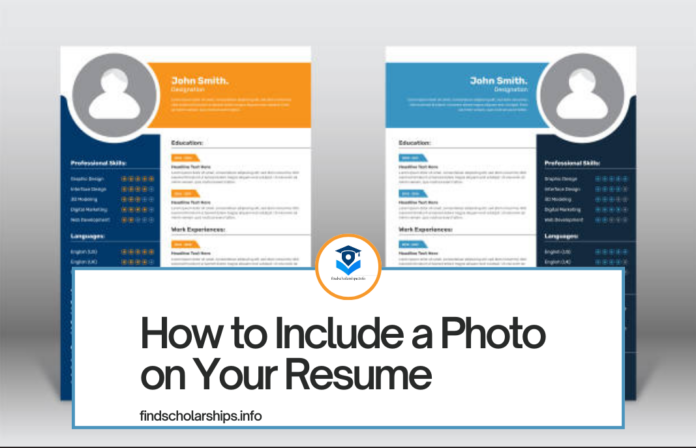How to Include a Photo on Your Resume. Including a photo on your resume can be a game-changer, but it requires careful consideration. A well-chosen photo can make a strong first impression and help your resume stand out. This guide will walk you through the dos and don’ts of adding a photo to your resume to ensure it enhances your application rather than detracts from it.
Why You Might Include a Photo on Your Resume
Cultural Norms
In some countries, such as Germany, France, and China, including a photo on your resume is standard practice. Employers in these regions expect to see a professional headshot, and not including one can make your application appear incomplete.
Personal Branding
A photo can strengthen your personal brand, making you more memorable to potential employers. In industries like media, marketing, and customer service, where personal presentation matters, a photo can highlight your professionalism and approachability.
When to Avoid Including a Photo
Country-Specific Norms
In countries like the United States, Canada, and the United Kingdom, including a photo is generally discouraged due to strict anti-discrimination laws. Employers in these regions focus on your skills and experience to avoid unconscious bias.
Industry Standards
In some fields, particularly in finance, law, and academia, photos on resumes are uncommon and can be seen as unprofessional. Research the norms in your specific industry before deciding to include a photo.
How to Choose the Right Photo for Your Resume
Professional Quality
Your photo should be high-quality and professionally taken. Avoid selfies or casual photos. A professional headshot ensures you look polished and serious about the job.
Appropriate Attire
Dress in professional attire that reflects the industry you’re applying to. For most corporate jobs, this means business formal wear. For more creative roles, slightly less formal but still professional attire might be acceptable.
Neutral Background
Choose a neutral, uncluttered background. A plain white or light-colored background works best as it keeps the focus on you.
Facial Expression
A friendly, approachable expression can make a positive impression. A natural smile can convey confidence and warmth, making you seem more personable.
Tips for Adding Your Photo to Your Resume
Placement
Place your photo at the top of your resume, typically in the upper right or left corner. This placement ensures it’s one of the first things the employer sees but doesn’t dominate the document.
Size
Your photo should be small enough to not overshadow your resume content but large enough to be clearly visible. Aim for a size of around 1.5 inches by 2 inches (3.8 cm by 5 cm).
File Format
Ensure your photo is in a commonly used format, such as JPEG or PNG. These formats maintain quality and are easily accessible.
Consistency
Use the same photo across your professional profiles, such as LinkedIn, to maintain consistency in your personal branding.
Common Mistakes to Avoid
Inappropriate Photos
Avoid using photos that are too casual or unprofessional. Vacation photos, group shots, or overly filtered images are not suitable for a resume.
Outdated Images
Use a recent photo. An outdated image can create confusion if you look significantly different now.
Distracting Elements
Ensure there are no distracting elements in the background or on your person, such as busy patterns, excessive jewelry, or unprofessional accessories.
Final Thoughts
Including a photo on your resume can be beneficial if done correctly. It’s essential to consider cultural and industry norms, choose a professional and appropriate image, and place it correctly on your resume. By following these guidelines, you can make a positive impression and enhance your application.
For more tips on crafting the perfect resume, check out our other articles in the Resume/CV Tips category. Happy job hunting!



